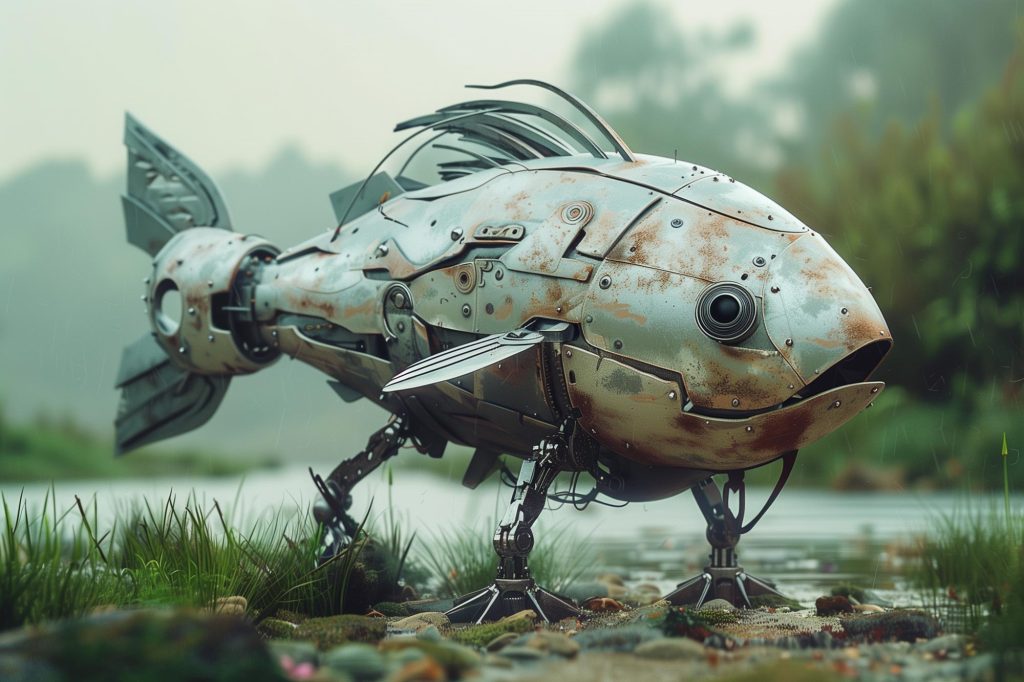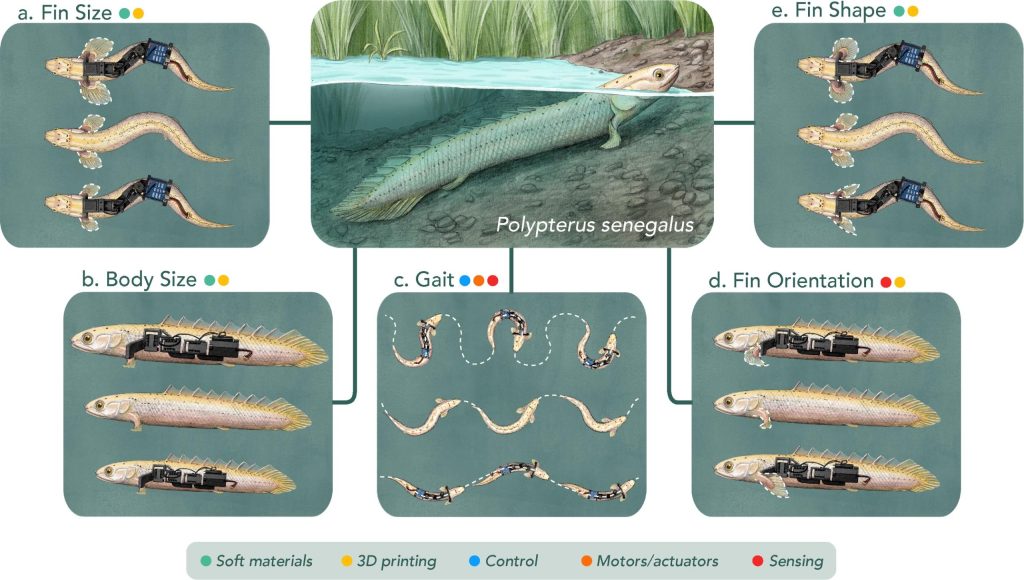Robots Bring Ancient Fish to Life: Unveiling Evolution’s Secrets
In a groundbreaking fusion of robotics and paleontology, scientists are using advanced robotic technology to breathe life into ancient fish, providing unprecedented insights into one of the most significant transitions in evolutionary history: the move from water to land. This innovative research, spearheaded by a team from the University of Cambridge, aims to decode how our distant ancestors adapted their anatomy and locomotion for terrestrial life approximately 390 million years ago.
The project revolves around creating “paleo-inspired robots,” which are mechanical analogs of ancient fish skeletons. These robots will mimic the movements of early vertebrates, allowing researchers to explore how anatomical changes influenced their ability to traverse land. Dr. Michael Ishida, a leading figure in this research, emphasizes that while fossil records provide crucial information, they often leave gaps that robotics can help fill. “Fossils tell part of the story, but they can’t reveal how these creatures moved or interacted with their environment,” he explains.
By studying both modern-day walking fish like mudskippers and fossilized remains of extinct species, the team aims to reconstruct the biomechanics of early land-dwelling animals. The robots will feature mechanical joints designed to replicate muscles and ligaments, enabling scientists to conduct experiments on their movement patterns. This experimental approach could illuminate questions such as how much energy different walking styles required and which movements were most efficient.
The significance of this research extends beyond mere curiosity about ancient life; it touches upon fundamental questions about evolution itself. Understanding how vertebrates transitioned from aquatic habitats to terrestrial environments can shed light on broader evolutionary processes that shaped the diversity of life on Earth. As Dr. Ishida notes, “This transition is a pivotal moment in the history of life, and our findings could either support or challenge existing theories regarding these early adaptations.”
The challenges faced by researchers in this field are substantial. Many ancient species are known only from incomplete fossil records, making it difficult to reconstruct their full range of motion accurately. “In some cases, we’re just guessing how certain bones connected or functioned,” Dr. Ishida admits. This uncertainty is where robotics becomes invaluable; it allows for real-world testing of hypotheses that might otherwise remain speculative.
Moreover, the implications of this research stretch into various fields beyond paleontology. The insights gained from studying these robotic models could influence modern robotics design and biomechanics, potentially leading to advancements in robotic efficiency inspired by millions of years of evolution. “We’re trying to close the loop between fossil evidence and real-world mechanics,” Dr. Ishida states, highlighting the interdisciplinary nature of this work.
The project has garnered attention not only for its innovative approach but also for its potential to inspire future research collaborations across disciplines. As researchers build these paleo-robots, they hope to encourage others in both engineering and biological sciences to explore similar methodologies. The team is currently in the early stages of constructing their robotic models but anticipates having results within the next year.
In conclusion, as these robots come to life, they will not only animate ancient creatures but also enrich our understanding of evolutionary biology. By bridging gaps in our knowledge with cutting-edge technology, scientists are poised to uncover critical insights into how life on Earth evolved from simple aquatic organisms into the diverse array of terrestrial species we see today.



